Wallasey Corporation Tramways, No. 78
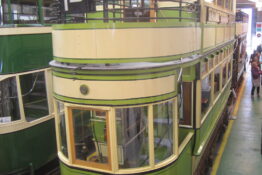 Wallasey 78 is a unique survivor that also represents an important “missing link” in the evolution of British double deck tramcars. Built by the Brush Electrical Engineering Company based in Loughborough, it was already decidedly outdated when it rolled off the...
Wallasey 78 is a unique survivor that also represents an important “missing link” in the evolution of British double deck tramcars. Built by the Brush Electrical Engineering Company based in Loughborough, it was already decidedly outdated when it rolled off the...

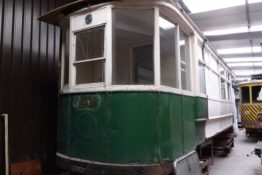 By the early 1920s, Britain’s tramway operators were facing much greater challenges than they had in the years preceding the First World War. One problem was that the overall condition of tramcars, track and overhead equipment had deteriorated markedly during a period...
By the early 1920s, Britain’s tramway operators were facing much greater challenges than they had in the years preceding the First World War. One problem was that the overall condition of tramcars, track and overhead equipment had deteriorated markedly during a period...
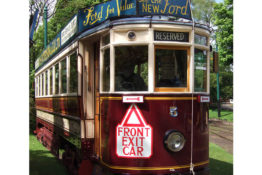 Most of Britain’s first generation tramways were municipally owned and operated, but Gateshead & District Tramways was an exception. It was a subsidiary of British Electric Traction Company, which for many years was the largest privately-owned tramway...
Most of Britain’s first generation tramways were municipally owned and operated, but Gateshead & District Tramways was an exception. It was a subsidiary of British Electric Traction Company, which for many years was the largest privately-owned tramway...
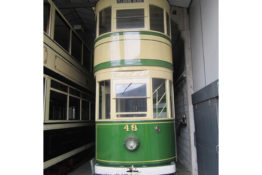 Like its open-balconied stable-mate, Blackpool 40 (also in the collection), number 49 was one of a number of Standard tramcars that augmented the fleet in the early years after Blackpool Corporation Tramway acquired its northern neighbour, the Blackpool and Fleetwood...
Like its open-balconied stable-mate, Blackpool 40 (also in the collection), number 49 was one of a number of Standard tramcars that augmented the fleet in the early years after Blackpool Corporation Tramway acquired its northern neighbour, the Blackpool and Fleetwood...
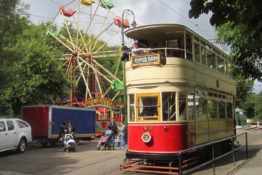 Blackpool 40’s place in the tramway history books is assured by virtue of the fact that this classic ‘Standard’ tramcar design was to be the last of the ‘traditional’ first generation trams to operate in the United Kingdom. By the time it was built, in 1926,...
Blackpool 40’s place in the tramway history books is assured by virtue of the fact that this classic ‘Standard’ tramcar design was to be the last of the ‘traditional’ first generation trams to operate in the United Kingdom. By the time it was built, in 1926,...
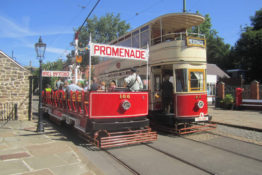 In addition to their primary function as supremely efficient conveyors of urban factory workers and others to and from their workplaces, tramways also performed an important secondary role in many seaside resorts by providing relatively cheap and effortless...
In addition to their primary function as supremely efficient conveyors of urban factory workers and others to and from their workplaces, tramways also performed an important secondary role in many seaside resorts by providing relatively cheap and effortless...
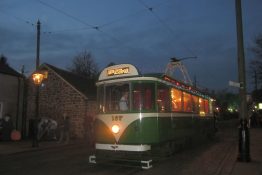 Blackpool 167 was built in 1928 as a successor to the by-then antiquated Fleetwood ‘Box cars’ with their wooden seats and poor ventilation (see Blackpool and Fleetwood number 40) and the even older Blackpool and Fleetwood racks with their bench seats and open sides...
Blackpool 167 was built in 1928 as a successor to the by-then antiquated Fleetwood ‘Box cars’ with their wooden seats and poor ventilation (see Blackpool and Fleetwood number 40) and the even older Blackpool and Fleetwood racks with their bench seats and open sides...
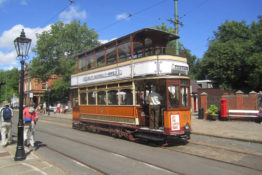 Glasgow 22 provides an interesting example of a traditional four wheeled tramcar, of which there are several at Crich. Many of these (for example Chesterfield 7) were purchased ‘off the peg’ from established tramcar suppliers and received relatively little...
Glasgow 22 provides an interesting example of a traditional four wheeled tramcar, of which there are several at Crich. Many of these (for example Chesterfield 7) were purchased ‘off the peg’ from established tramcar suppliers and received relatively little...
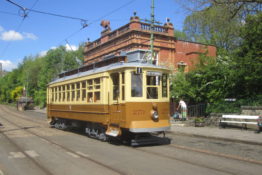 One of the aims of the Tramway Museum Society is to illustrate the key phases in the historical development of traditional tramcars, but not all of these were represented in the type of tramcars that were typically designed and operated in the British Isles. One...
One of the aims of the Tramway Museum Society is to illustrate the key phases in the historical development of traditional tramcars, but not all of these were represented in the type of tramcars that were typically designed and operated in the British Isles. One...
 Blackpool Corporation’s electric locomotive serves as a reminder that not all electric tramcars were built to carry passengers. In different parts of the world trams have also been used for the carriage of a variety of other goods and commodities ranging from coal and...
Blackpool Corporation’s electric locomotive serves as a reminder that not all electric tramcars were built to carry passengers. In different parts of the world trams have also been used for the carriage of a variety of other goods and commodities ranging from coal and...